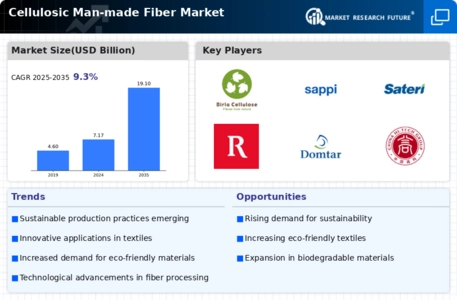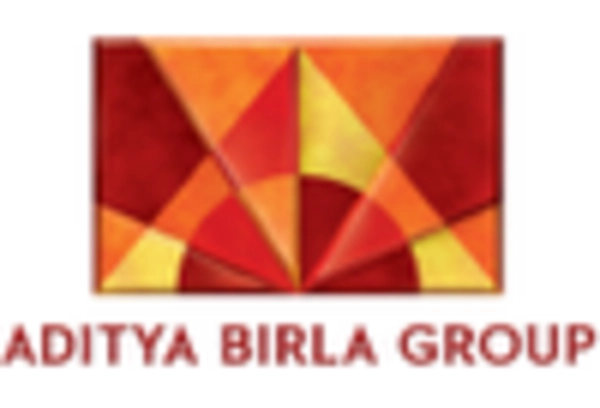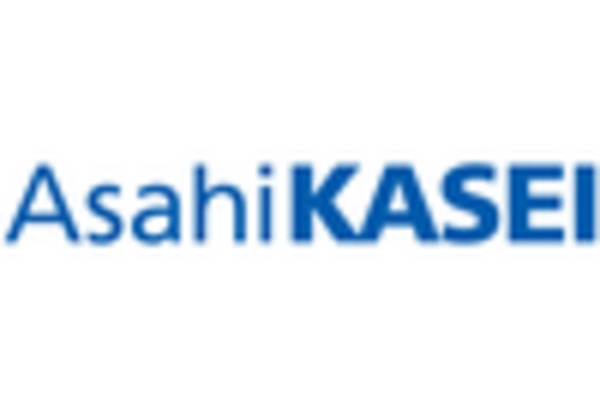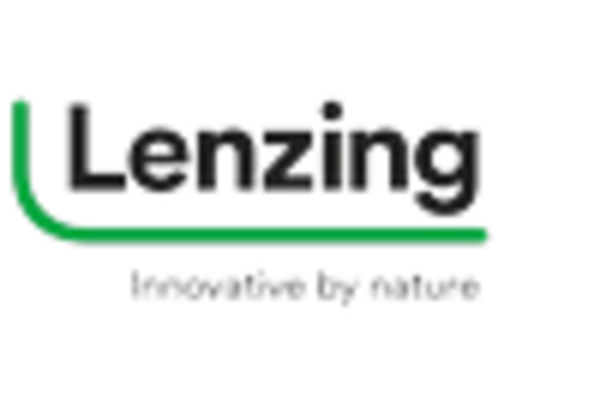The Cellulosic Man-made Fiber Market is currently characterized by a dynamic competitive landscape, driven by increasing consumer demand for sustainable textiles and innovative fiber technologies. Key players such as Lenzing AG (Austria), Aditya Birla Group (India), and Eastman Chemical Company (United States) are at the forefront of this market, each adopting distinct strategies to enhance their market positioning. Lenzing AG, known for its TENCEL™ brand, emphasizes sustainability and innovation, focusing on eco-friendly production processes. Meanwhile, Aditya Birla Group leverages its extensive supply chain capabilities to optimize production efficiency and expand its global footprint. Eastman Chemical Company, on the other hand, is investing in advanced technologies to develop high-performance fibers, thereby enhancing its competitive edge in the market.
The business tactics employed by these companies reflect a concerted effort to localize manufacturing and optimize supply chains, which are crucial in a moderately fragmented market. This competitive structure allows for a diverse range of offerings, yet the influence of major players remains significant. Their ability to adapt to changing market demands and consumer preferences is pivotal in shaping the overall market dynamics.
In August 2025, Lenzing AG (Austria) announced a strategic partnership with a leading fashion retailer to develop a new line of sustainable apparel made from TENCEL™ fibers. This collaboration not only reinforces Lenzing's commitment to sustainability but also positions it as a key player in the eco-conscious fashion segment, potentially attracting a broader consumer base. The partnership is expected to enhance brand visibility and drive sales growth in a competitive market.
In July 2025, Aditya Birla Group (India) launched a new initiative aimed at reducing water consumption in its fiber production processes. This move aligns with global sustainability goals and demonstrates the company's proactive approach to environmental stewardship. By implementing advanced water recycling technologies, Aditya Birla Group is likely to improve its operational efficiency while appealing to environmentally conscious consumers, thereby strengthening its market position.
In September 2025, Eastman Chemical Company (United States) unveiled a new line of biodegradable fibers designed for the fashion industry. This innovative product launch is indicative of Eastman's focus on sustainability and its commitment to addressing the growing demand for environmentally friendly materials. The introduction of biodegradable fibers could potentially set a new standard in the industry, positioning Eastman as a leader in sustainable fiber solutions.
As of October 2025, the competitive trends in the Cellulosic Man-made Fiber Market are increasingly defined by digitalization, sustainability, and the integration of advanced technologies such as AI. Strategic alliances among key players are shaping the landscape, fostering innovation and enhancing supply chain reliability. Moving forward, the emphasis appears to be shifting from price-based competition to a focus on technological advancements and sustainable practices, suggesting that companies that prioritize innovation and environmental responsibility will likely gain a competitive advantage in this evolving market.

















Leave a Comment